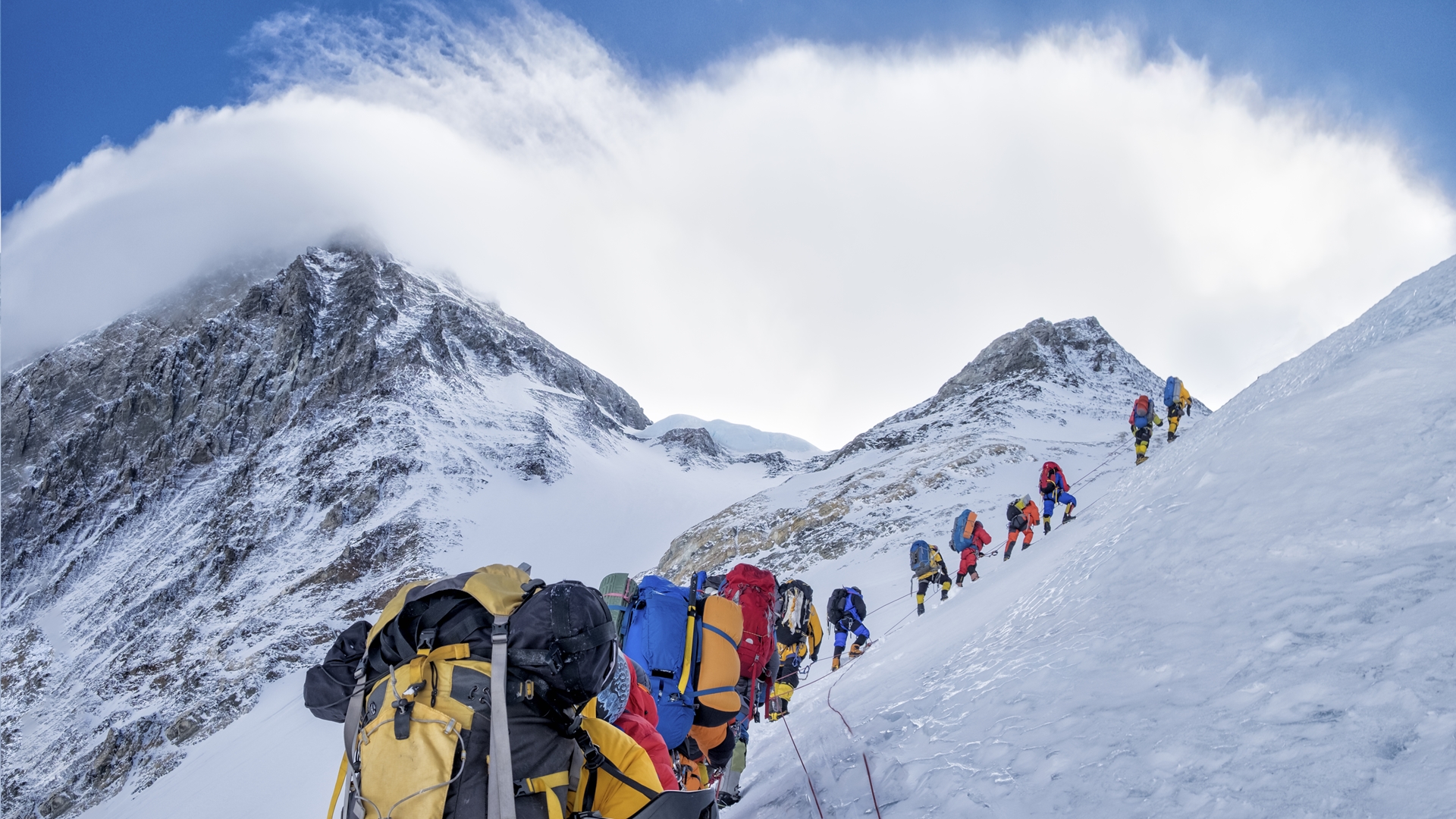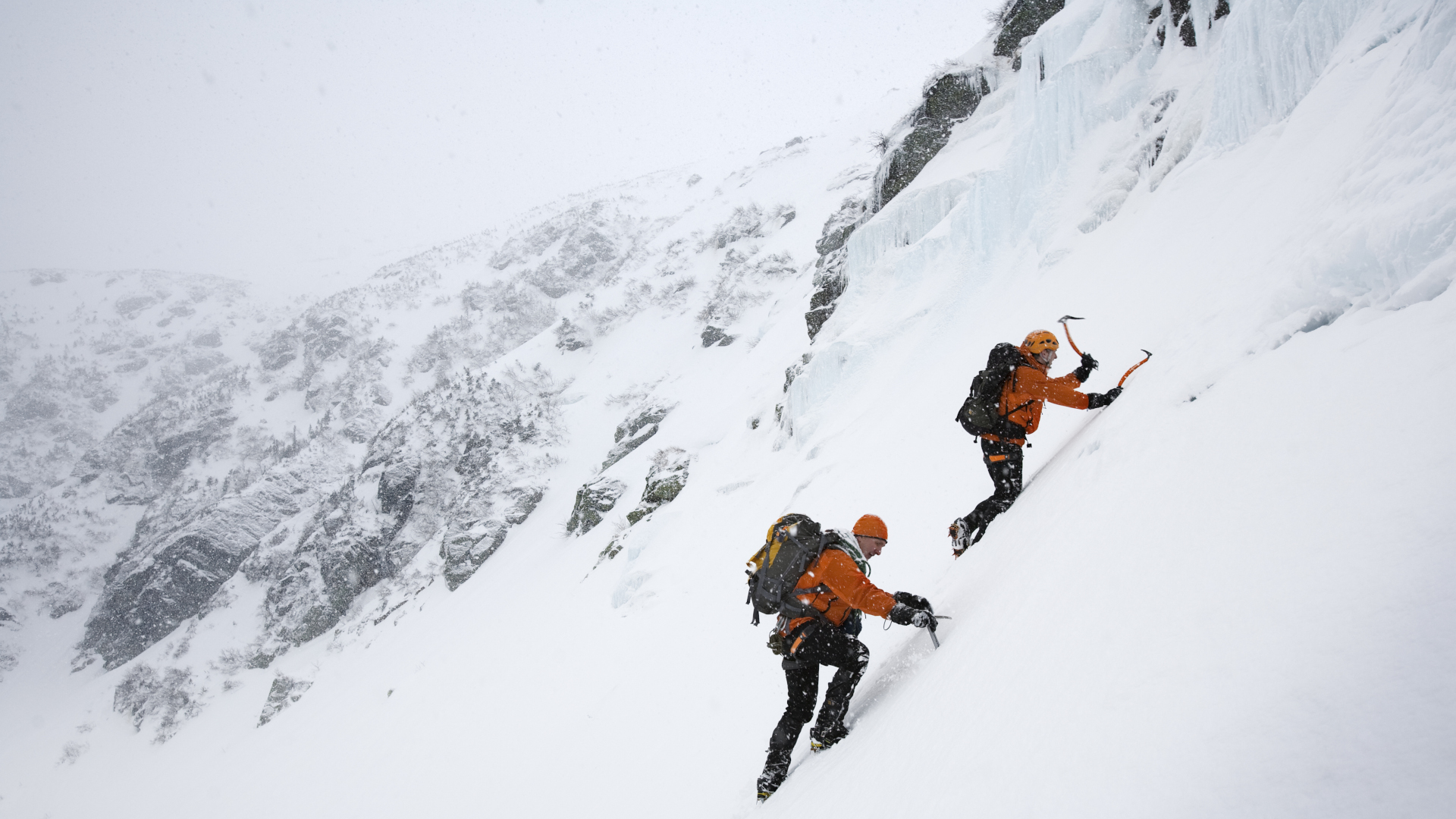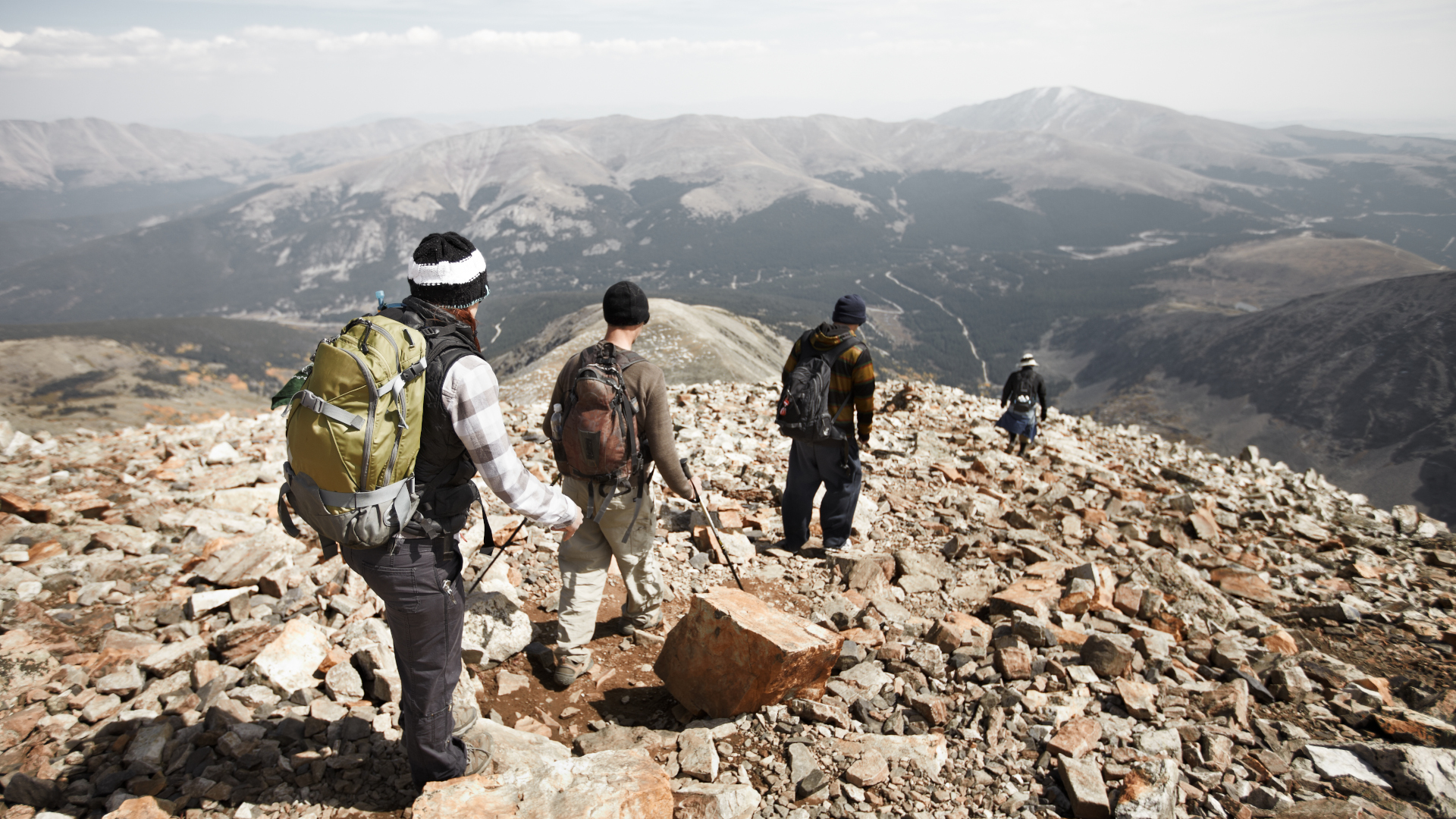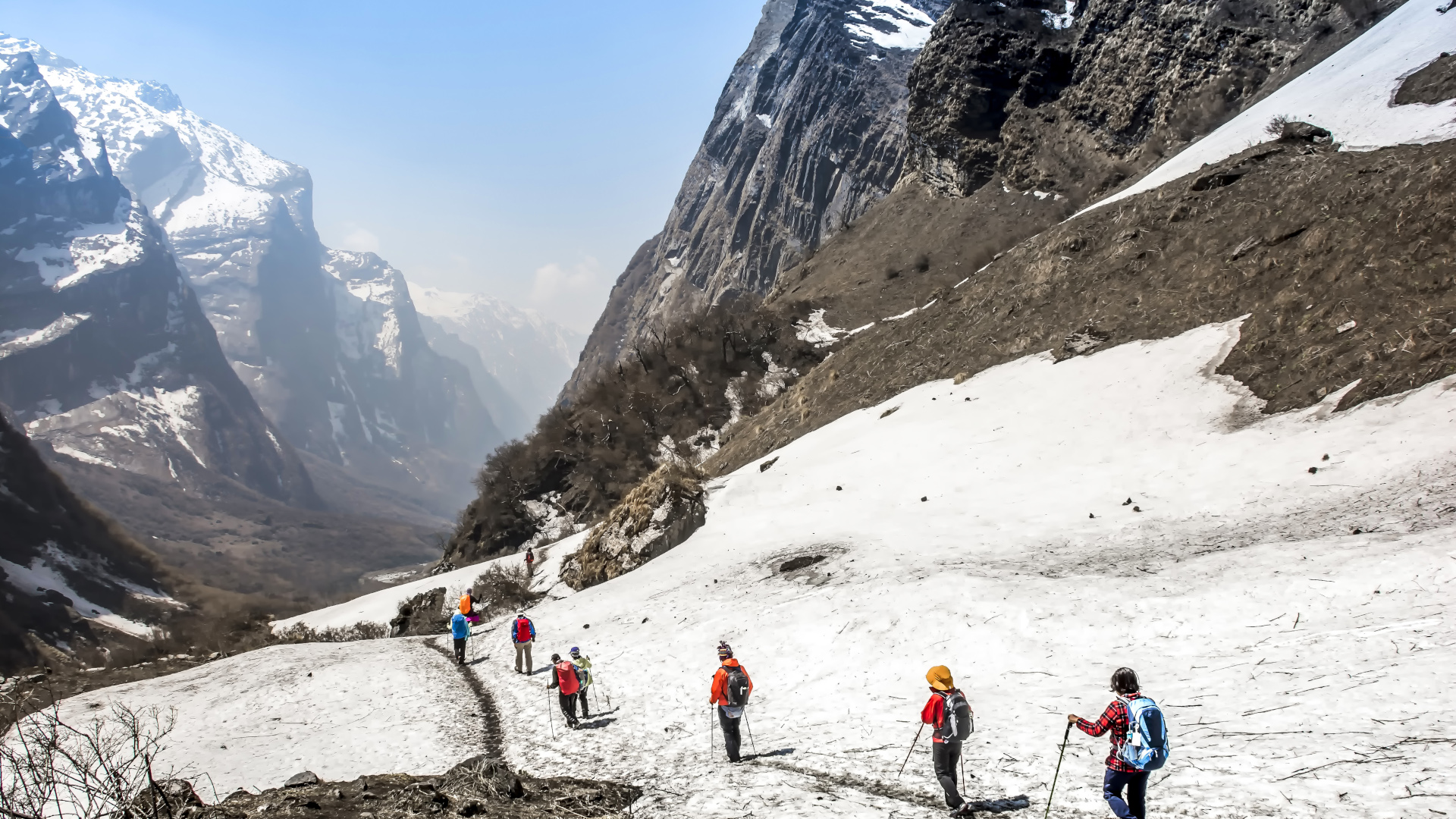Mountaineering vs hiking: is there a difference?
We compare mountaineering vs hiking to explain how they differ, where they overlap and which method of ascending mountains is right for you

We often use the terms mountaineering and hiking interchangeably to describe climbing a mountain, but in fact these two outdoor pursuits involve quite a different set of skills, gear and initiative. We compare mountaineering vs hiking to explain how they differ, where they overlap and which one is right for you.
What is mountaineering?

Mountaineering, also commonly referred to as alpinism although slightly different, is a sport involving ascending the highest point of mountains for pleasure. Mountaineering incorporates activities such as rock climbing, ice climbing and skiing – basically whatever the terrain requires – in order to reach the summit. By nature, mountaineering tends to be adventurous and involve some risk and requires technical expertise.
Though there is ample evidence of early humans exploring mountains across the world, it wasn’t until the 18th century that scientists started to express interest in climbing mountains for sport, such as Mont Blanc in the Alps. By 1870, all summits in the Alps had been successfully conquered and mountaineering had become a flourishing sport in Britain. With the founding of the Alpine Club in 1857, mountaineers started to set their sights beyond the Alps and towards more challenging ranges like the Himalayas.
Today, mountaineers routinely set new records and routes on the world’s most dangerous mountains.
What is the difference between mountaineering and hiking?

As you’ll know if you’ve read our article on hiking vs trekking, hiking is defined as going for a long walk across country. The activity of hiking therefore always denotes some distance and it takes place outside, usually on a rough path. How long and how challenging the terrain can vary quite wildly from a fairly gentle two-mile amble through a forest to a full day scrambling up a peak, with the key piece of equipment being hiking boots. You can go for a hike alone or with friends or even with a guide.
Mountaineering always involves ascending tall mountains with the intention of summiting and may involve bouldering, rock climbing and different types of skiing. Mountaineering, therefore, requires quite a bit more gumption, expertise and technical gear such as ropes, ice axes and crampons than is needed for hiking. Due to the technical nature of mountaineering, it is often done in pairs or groups of people or with a professional guide.
Is hiking part of mountaineering?

Though the two terms are not synonymous, mountaineering will always involve some hiking. In fact, you can consider hiking to be the foundation of mountaineering, with other tactics such as climbing and skiing employed as required.
All the latest inspiration, tips and guides to help you plan your next Advnture!
However, due to the nature of mountaineering, you should be clear that the hiking involved is always high altitude hiking and therefore requires training, acclimation and protective clothing and equipment – possibly even carrying supplemental oxygen. Some hiking, such as hiking a 14er, may require these skills and gear too, but hiking can also take place at low elevations.
Does mountaineering involve rock climbing?

Mountaineering will almost always involve some rock climbing, whether that’s bouldering or using gear for trad climbing. After all, if you can ascend on your own two feet without any climbing, you’re probably on a hike. That said, it’s possible that you could go mountaineering where you tackle the steepest parts with crampons and ice axes rather than ropes and ladders, but you’ll still be using your hands and arms as well as your feet and legs.
| Header Cell - Column 0 | Mountaineering | Hiking |
|---|---|---|
| Activities involved | Hiking, climbing, skiing | Walking, occasional scrambling |
| Terrain | Tall mountains | Mountains, forests, deserts, beaches, countryside |
| Destination | The goal is always to reach the summit | May involve a destination such as a summit or lake, or there may be no set destination or goal beyond the hike itself |
| Gear required | Requires technical gear such as crampons, ice axes, ropes, skiing equipment and usually camping equipment | Decent footwear such as hiking boots |
Mountaineering vs hiking: which is for you?

If you are already skilled at climbing and backcountry skiing and extremely confident and adventurous in challenging weather and mountainous terrain, mountaineering may well be for you. However, it’s recommended that you start out in a group of more experienced mountaineers and a guide and take the time to adapt to higher elevations.
If you’re not experienced and skilled in climbing and backcountry skiing and just seeking outdoor adventure, you should stick to hiking for now. You can always up the ante by training for a long distance thru hike, and if you have your heart set on mountaineering some day in the future, start by learning how to climb outdoors and ski uphill.
Julia Clarke is a staff writer for Advnture.com and the author of the book Restorative Yoga for Beginners. She loves to explore mountains on foot, bike, skis and belay and then recover on the the yoga mat. Julia graduated with a degree in journalism in 2004 and spent eight years working as a radio presenter in Kansas City, Vermont, Boston and New York City before discovering the joys of the Rocky Mountains. She then detoured west to Colorado and enjoyed 11 years teaching yoga in Vail before returning to her hometown of Glasgow, Scotland in 2020 to focus on family and writing.

